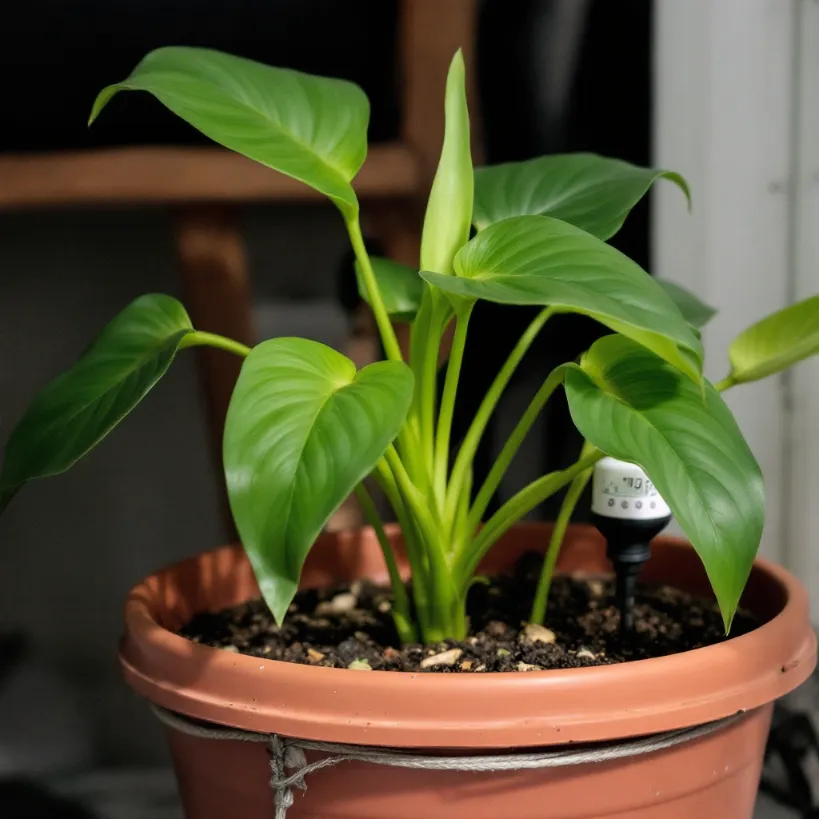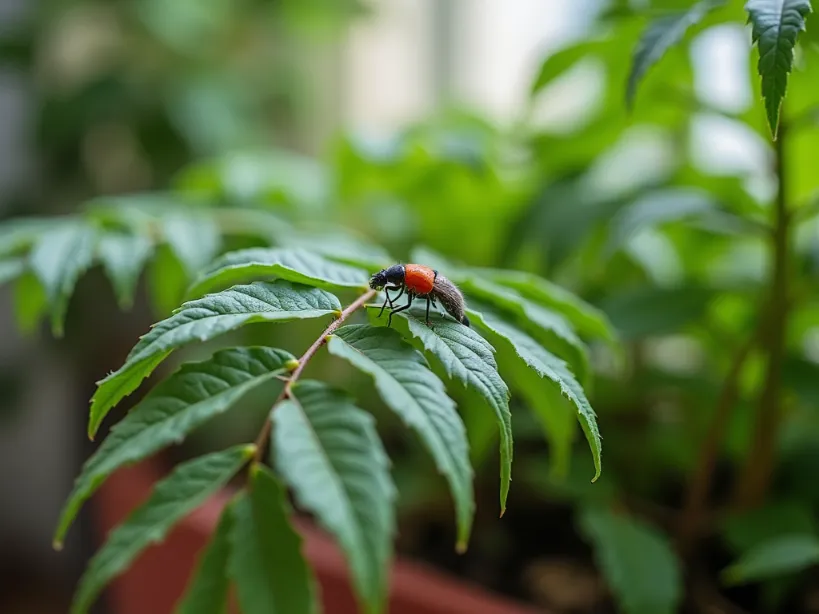So, your Philodendron is looking sad. Drooping like a drunk at last call. It happens. These plants, they ain’t made of steel. Preventing drooping Philodendron is about understanding what makes ’em tick—what makes ’em stand tall and what makes ’em flop over. It’s mostly about water, light, and the right dirt. Too much or too little of any of these, and your plant’s gonna tell you, by looking miserable.
Key Takeaways
Here’s the deal, short and sweet:
- Water’s a Fickle Friend: Too much, you’re drowning it. Too little, it’s gasping.
- Light, but Not Too Much: Think of a shady bar, not a desert.
- Dirt Matters: It needs to drain, not hold water like a sponge.
- Humidity’s a Hug: These plants like a bit of moisture in the air.
- Check the Roots: If they’re mushy, you’ve got a problem. It could be root rot.
- Bugs and sickness: Little pests or diseases can take a toll, making a plant, such as a Philodendron Birkin, droop.
Getting Down to Brass Tacks: Why Philodendrons Droop

Philodendrons, they’re like us in a way. They need the right balance. You overdo it on the booze, you’re gonna droop. Same with these guys, but with their needs.
The Usual Suspects: Water Woes
Most of the time, it’s the water. We have a full guide about watering needs of Philodendron.
Overwatering is like that guy at the bar who won’t go home. The roots sit in soggy soil, and they can’t breathe. Then comes root rot philodendron drooping, a real mess. The leaves go yellow, then droop.
Underwatering is the opposite. The plant’s parched, leaves get crispy, and down they go.
Light’s Tricky, Too
Philodendrons, they’re jungle plants. They like it bright, but not direct sun. Think dappled light, like under a tree. Too much sun, and the leaves might scorch, then droop. Too little, they get leggy, stretching for light, and then, yeah, drooping. Read our post about lighting conditions for your philodendron to get the gist.
Soil: The Foundation of It All
You wouldn’t build a house on quicksand, right? Same with plants. Philodendrons need soil that drains well. If it’s too heavy, too compact, water sits. Roots rot. Plant droops. Our detailed guide on Philodendron soil mix will give you valuable insights.
Humidity: The Air They Breathe
These plants, they like a bit of moisture in the air. Think tropical, not Arizona. Dry air can make the leaves curl and droop, especially at the tips. You can learn more about the Philodendron propagation methods in our extensive post.
Temperature’s a Thing, Too
Philodendrons don’t dig extremes. Too cold, they shiver and droop. Too hot, they wilt. Keep it comfy, like you like your living room. If you want to learn more about ideal conditions, you should review our guide about how cold can philodendron tolerate.
Feeding Time: Not Too Much, Not Too Little
Fertilizer is like vitamins. A little helps, but too much can burn. Nutrient deficiency philodendron drooping shows up in weak, droopy leaves.
Pests and Diseases: The Uninvited Guests
Sometimes, tiny bugs or sickness mess with your plant. Pest infestation philodendron drooping is a common problem, and disease infection philodendron drooping can bring your plant down. They suck the life out, literally, and the plant droops.
Troubleshooting: Turning That Droop Upside Down
Alright, so your Philodendron is doing the sad plant thing. Here’s how to play detective.
- Check the Soil: Stick your finger in. Wet? Hold off on watering. Bone dry? Give it a drink.
- Look at the Roots: Gently pull the plant out. Are the roots brown and mushy? Root rot. Snip off the bad parts, repot in fresh soil. You will need to learn how to repot a Philodendron.
- Light Check: Is it getting blasted by sun? Move it. Is it in a dark corner? Move it.
- Humidity Boost: Group plants together, or use a humidifier. Humidity and spider plants and other houseplants is essential.
- Pest Patrol: Look closely for tiny bugs. Wipe ’em off with soapy water, or use insecticidal soap.
Keeping it Upright: Long-Term Care

Once you’ve fixed the immediate problem, here’s how to keep your Philodendron happy – and upright:
- Regular Watering Schedule: Don’t just water when you remember. Get a routine. Learn the best way about watering Philodendron great tips.
- Right Light: Find that sweet spot. Bright, indirect light.
- Well-Draining Soil: Always.
- Occasional Feeding: During the growing season, a bit of fertilizer helps.
- Keep an Eye Out: Check regularly for pests, yellowing leaves, anything off.
Repotting
- Eventually your Philodendron, such as a Tree Philodendron, will become rootbound and you will need to repot it, so learning how to replant philodendron is a must.
- Repotting a Philodendron is not only for upsizing its pot. Sometimes you must do it to preventing drooping leaves in philodendrons.
- Changing old soil, and using a more appropiate soil mix might be required, so you might want to learn where to cut a Philodendron or even how to cut a Philodendron plant.
Propagation
- Sometimes drooping leaves in your Philodendron are unavoidable. The best course of action might be propagating your plant.
- For example, the Philodendron Selloum propagation process is very rewarding.
- Propagating a Philodendron is a fantastic experience, and for specific situations you must learn how to propagate a Philodendron Birkin.
- Some types of Philodendron are easy to propagate philodendrons in water.
It ain’t rocket science. It’s just paying attention. Your Philodendron, it’ll tell you what it needs. You just gotta listen – with your eyes. And remember, even the toughest-looking plants need a little care. They’re all just trying to survive, same as us. You should also review how to give proper care to any type of Philodendron, like for example the Philodendron Brasil
Related Resources
- Building on these ideas, our Philodendron Light Needs: Expert Guide for Thriving Plants guide offers further perspectives Philodendron Light Needs: Expert Guide for Thriving Plants.
- For more insights on this topic, you might find our exploration of Philodendron Propagation: 5 Expert Methods for Success valuable Philodendron Propagation: 5 Expert Methods for Success.
- This concept relates closely to what we cover in our analysis of Philodendron Verrucosum Care: Expert Tips for Velvety Leaves Philodendron Verrucosum Care: Expert Tips for Velvety Leaves.